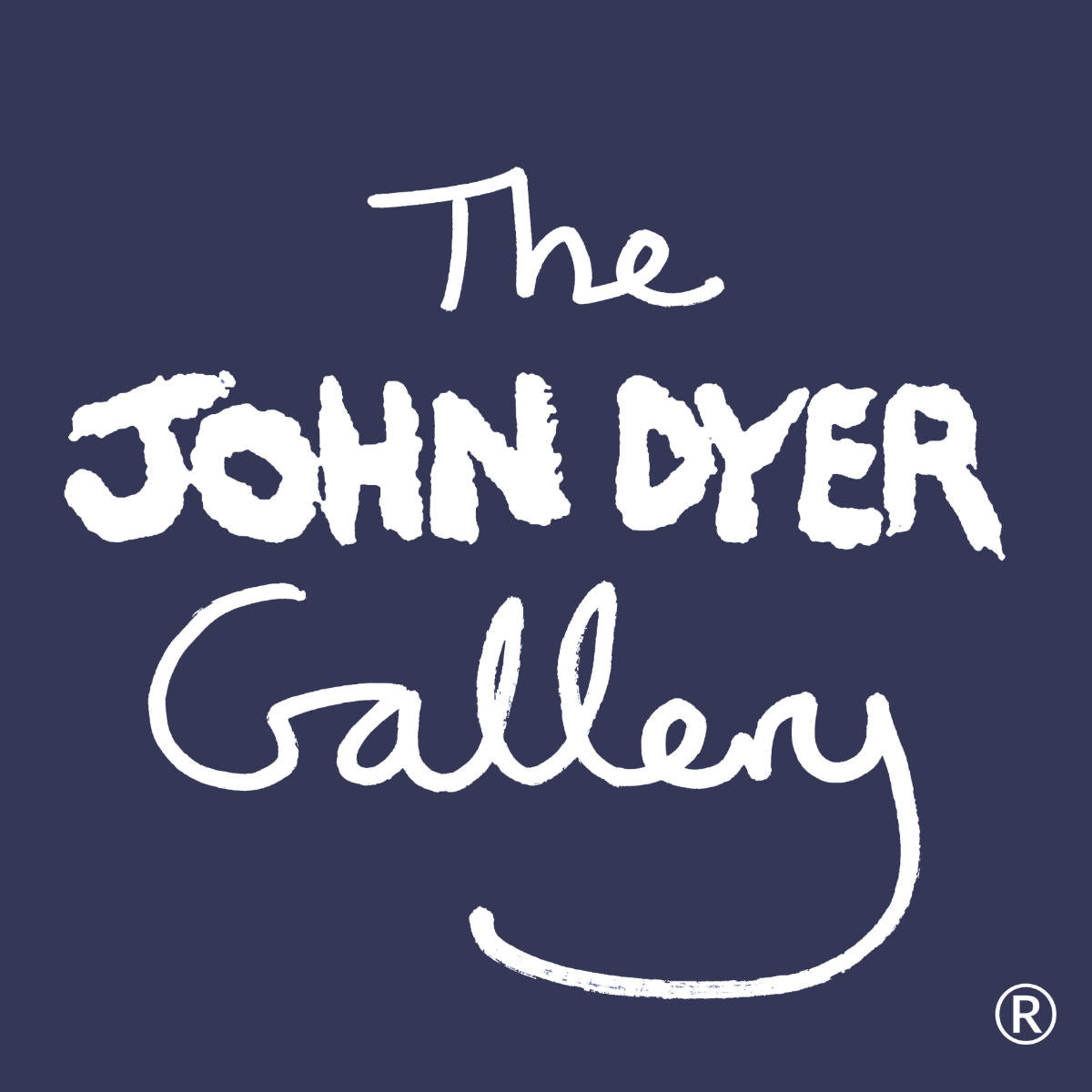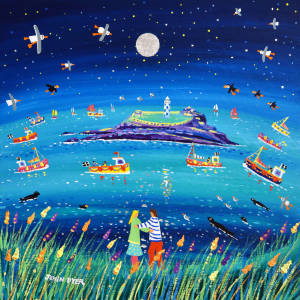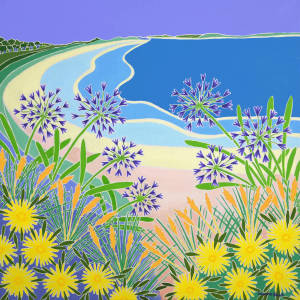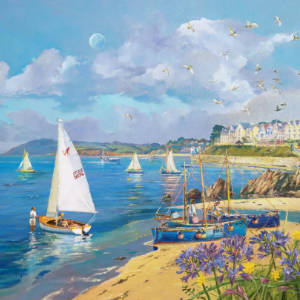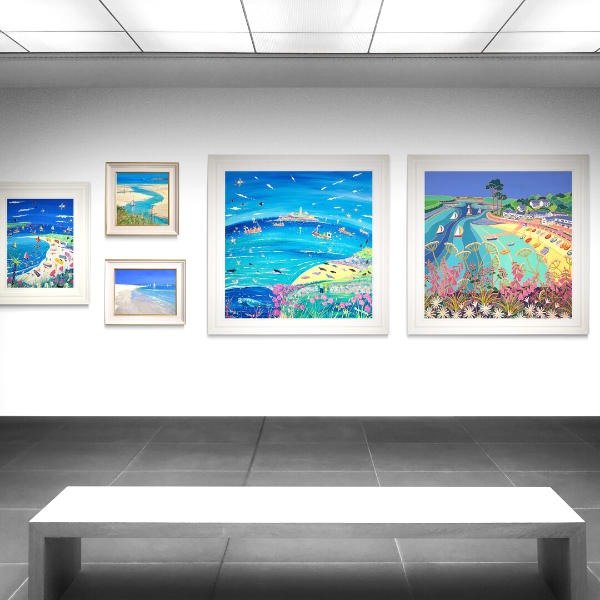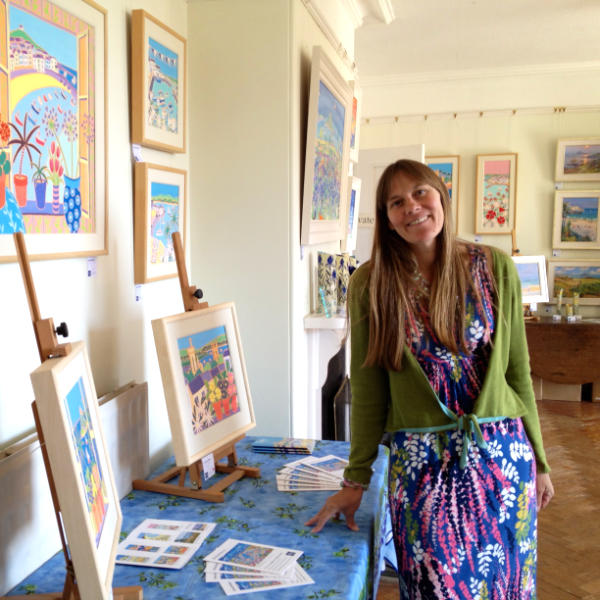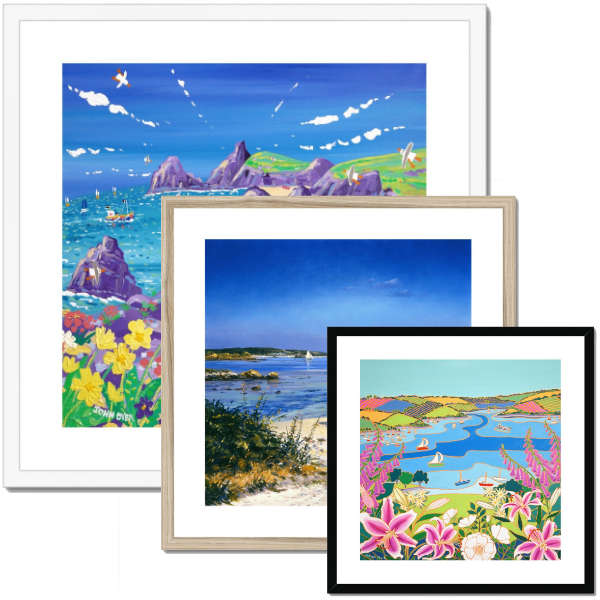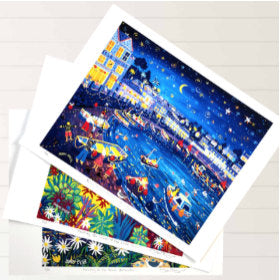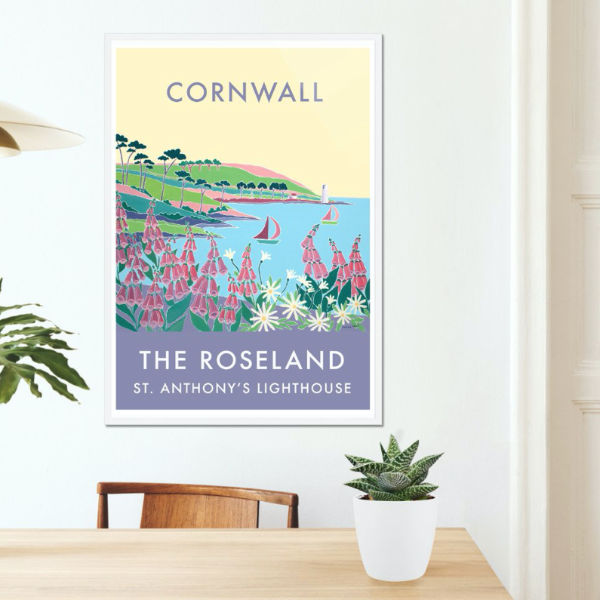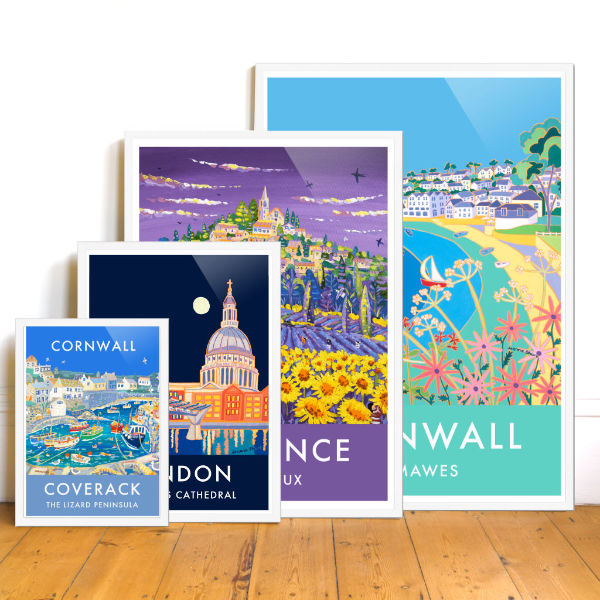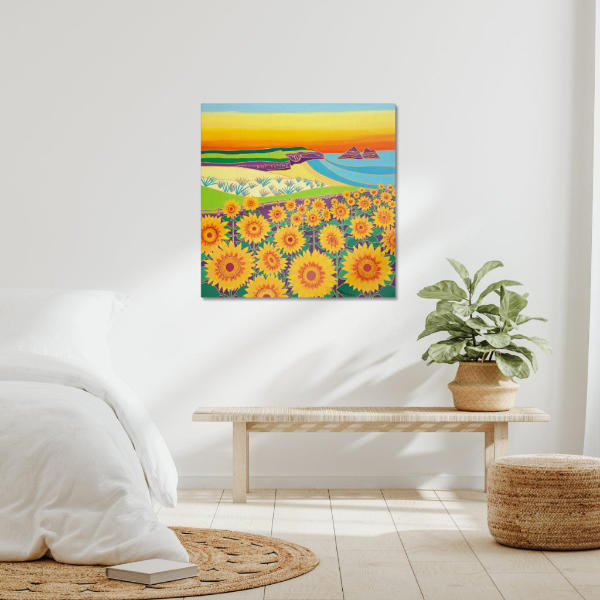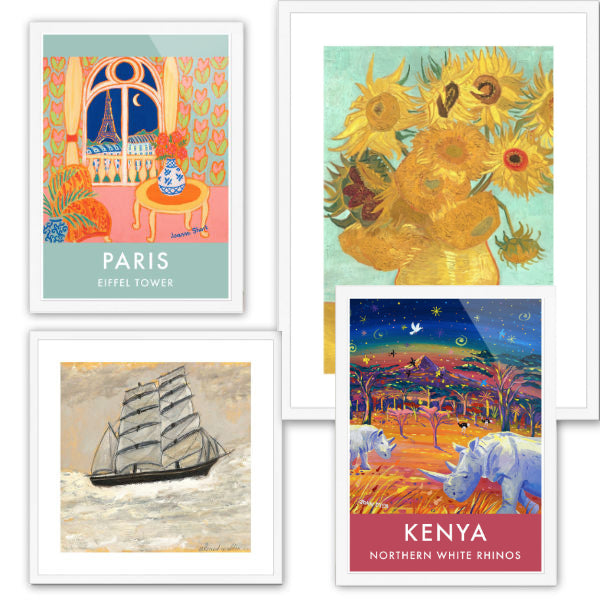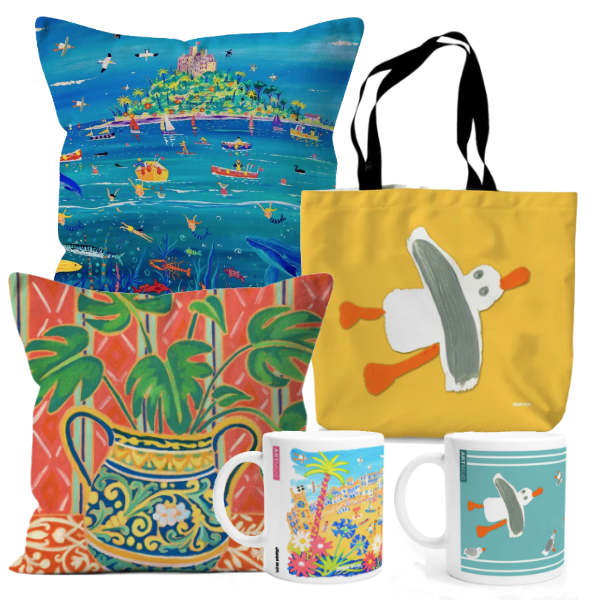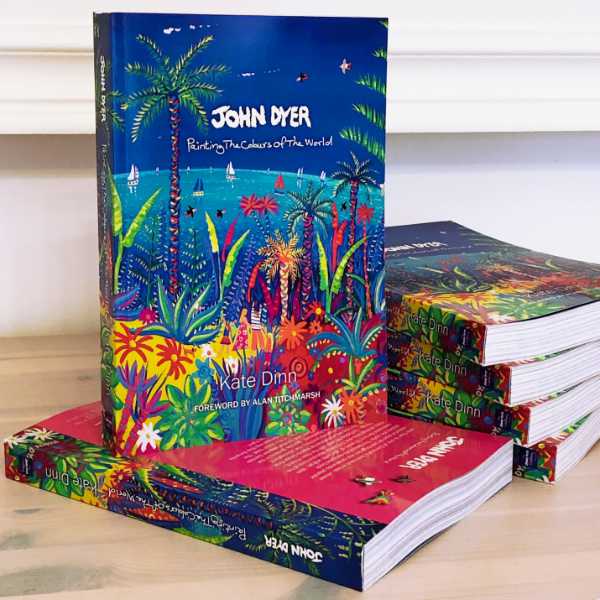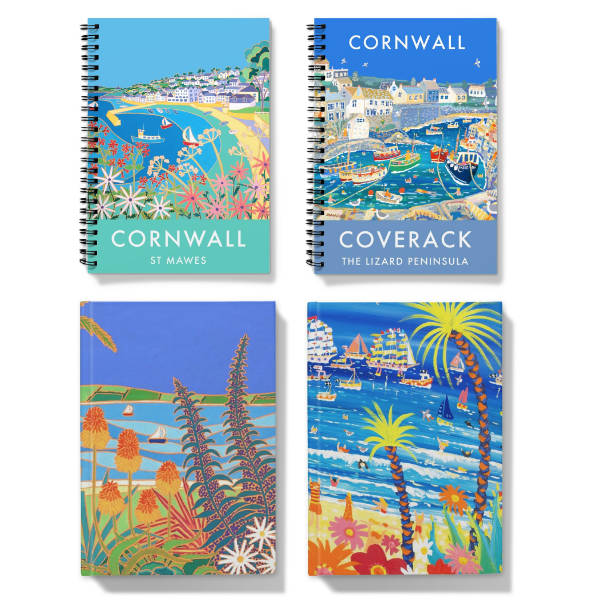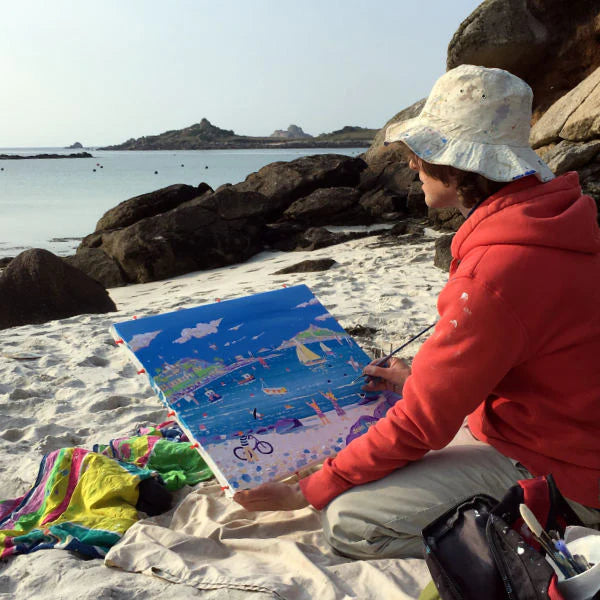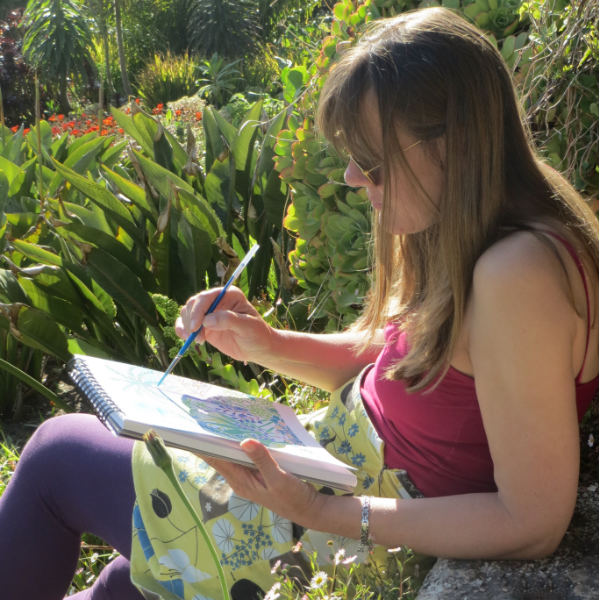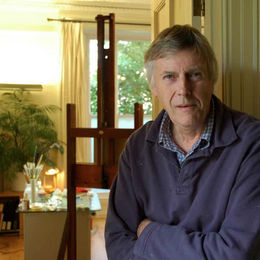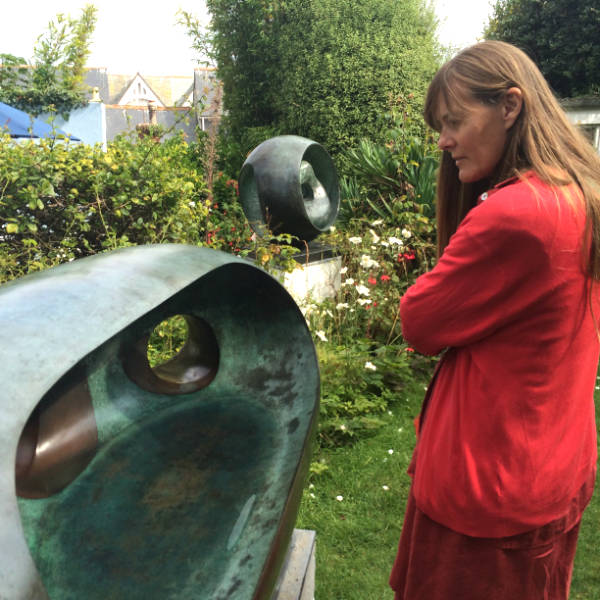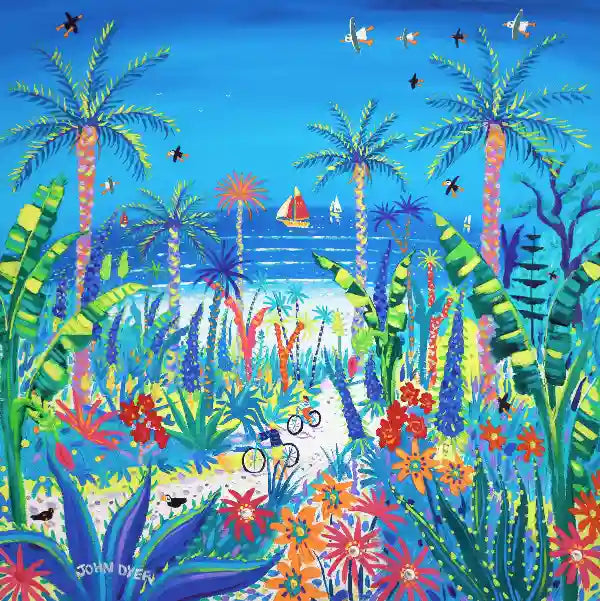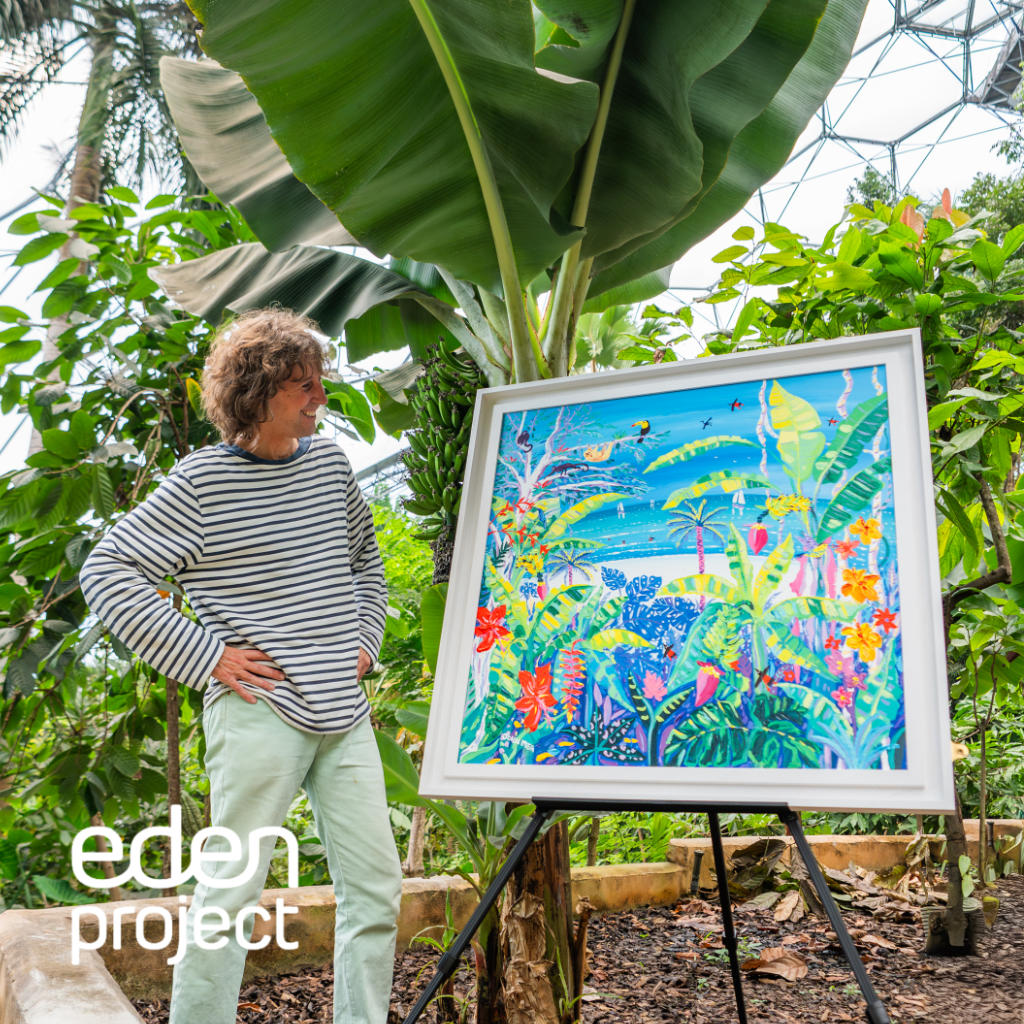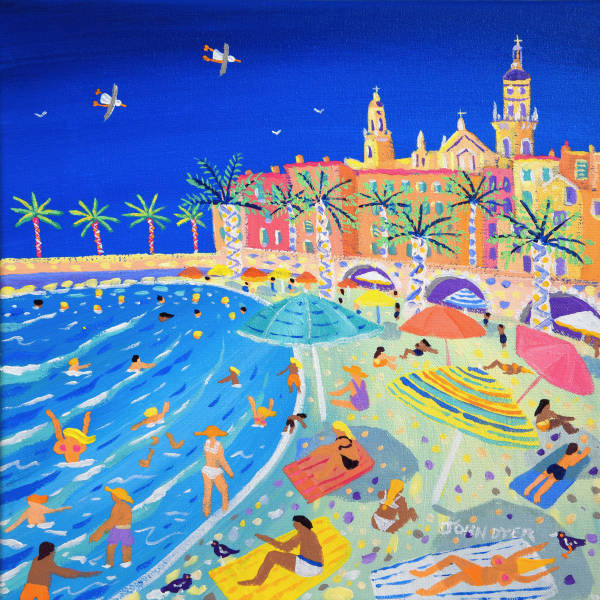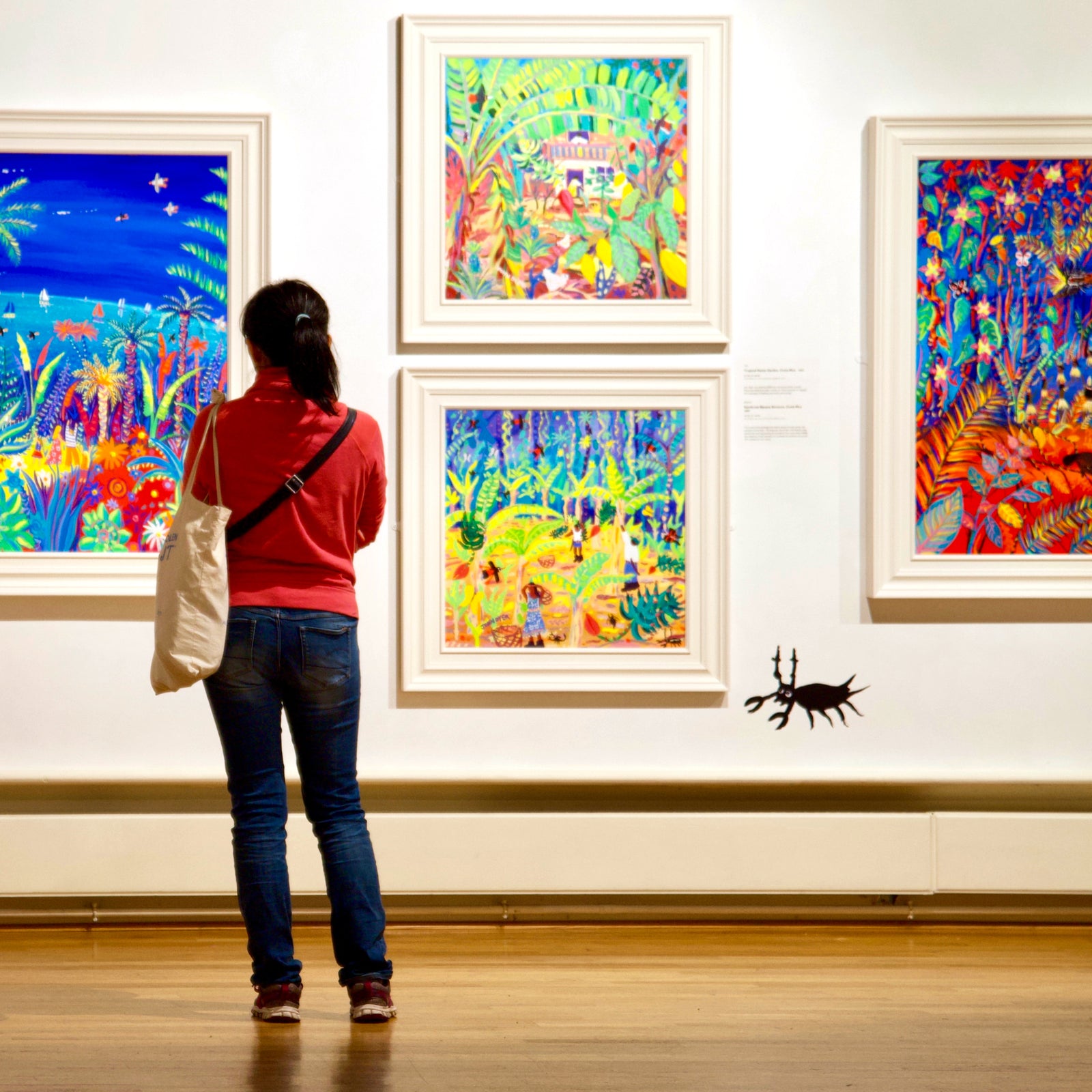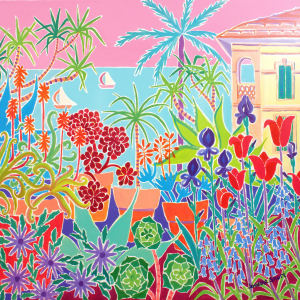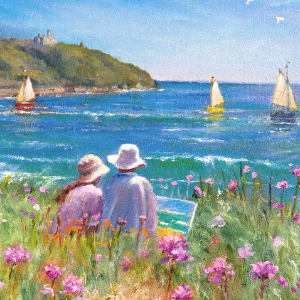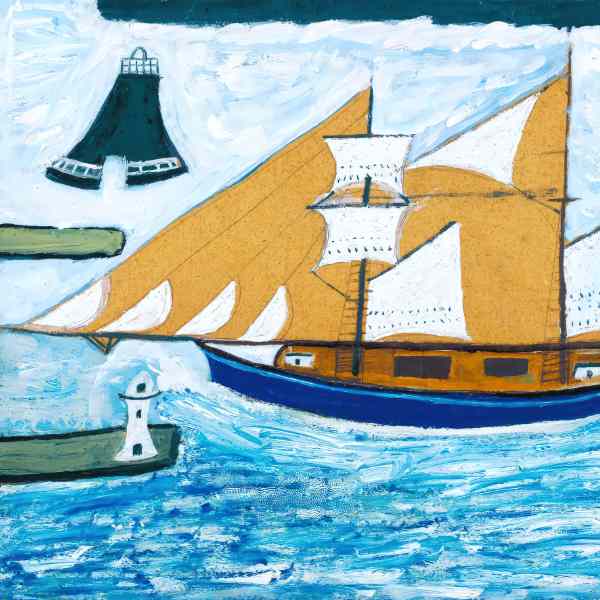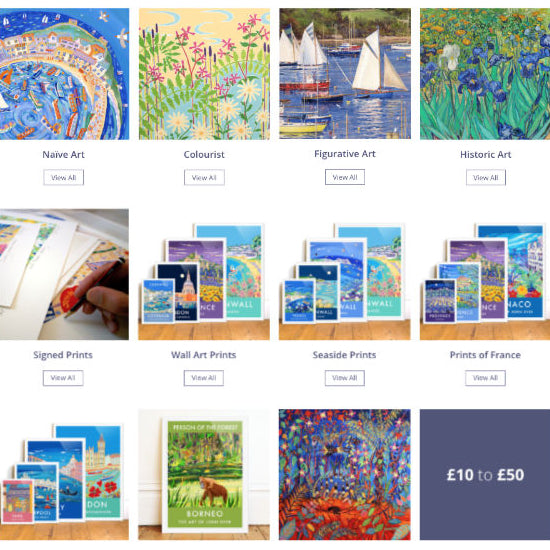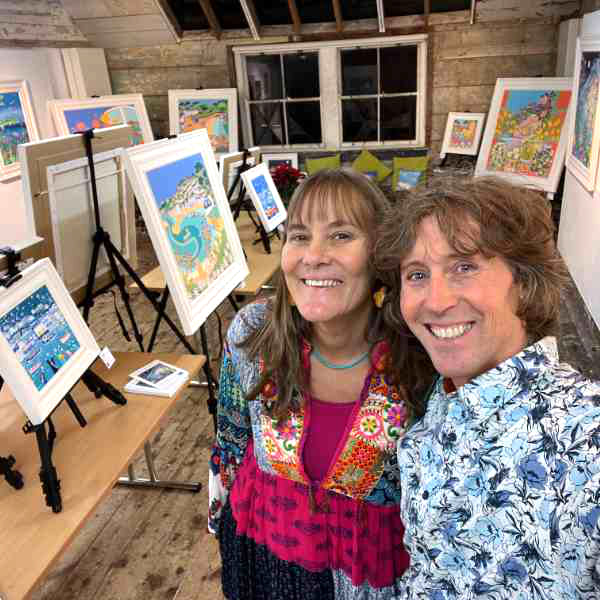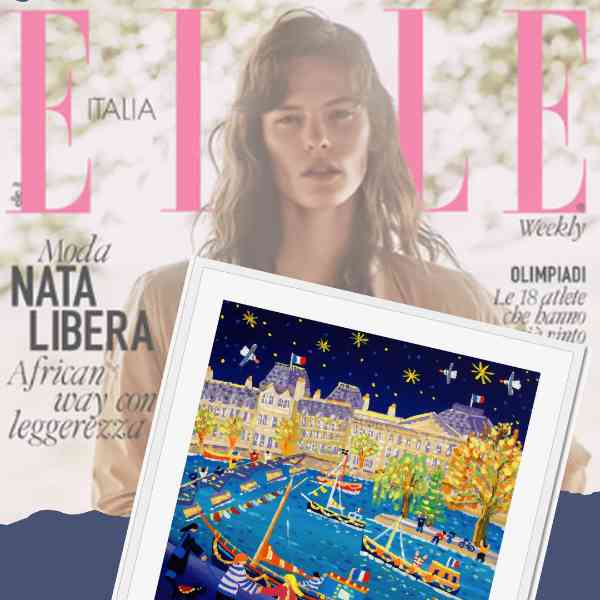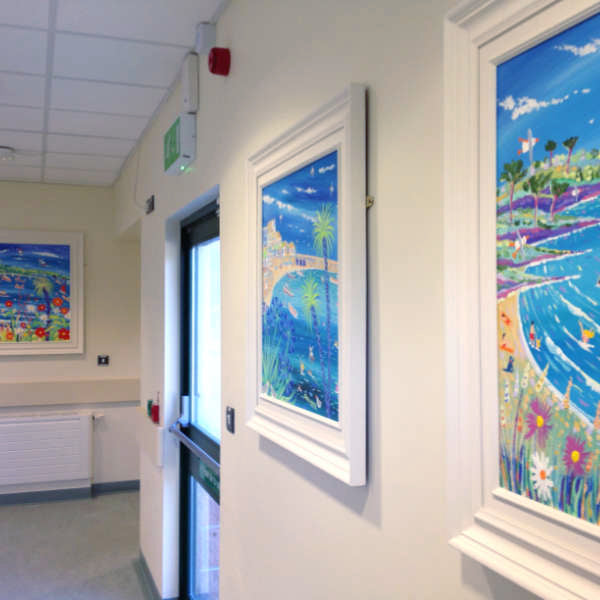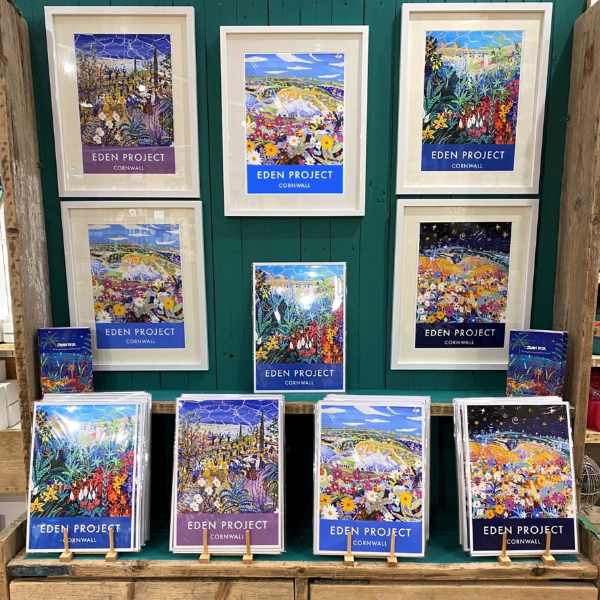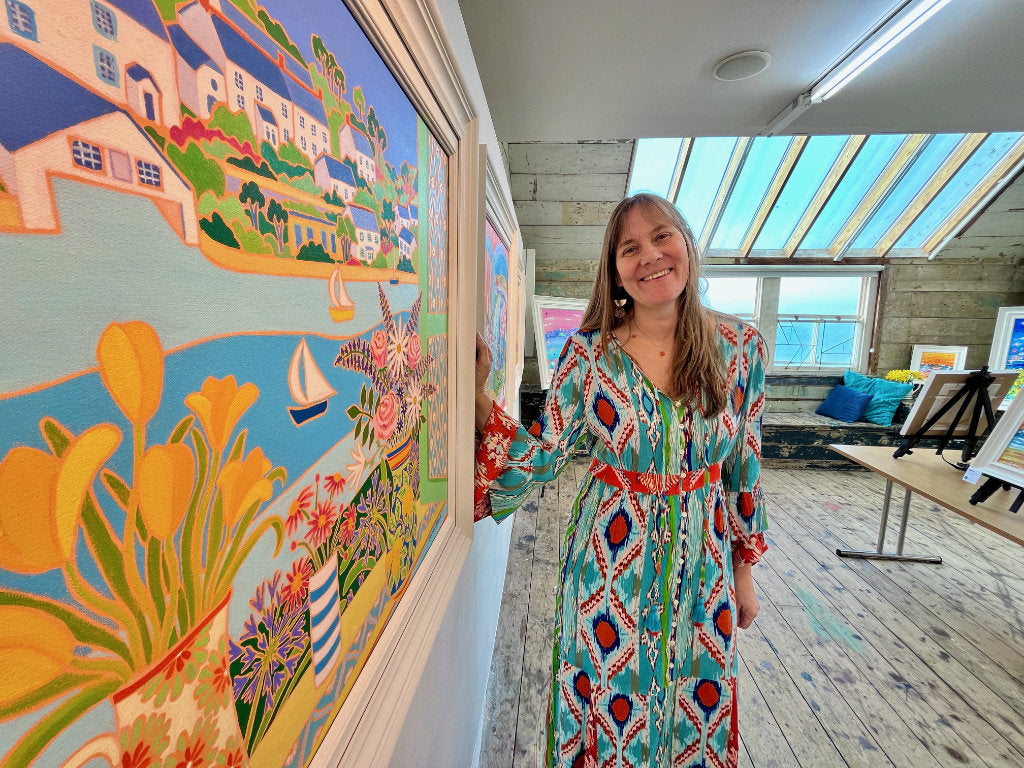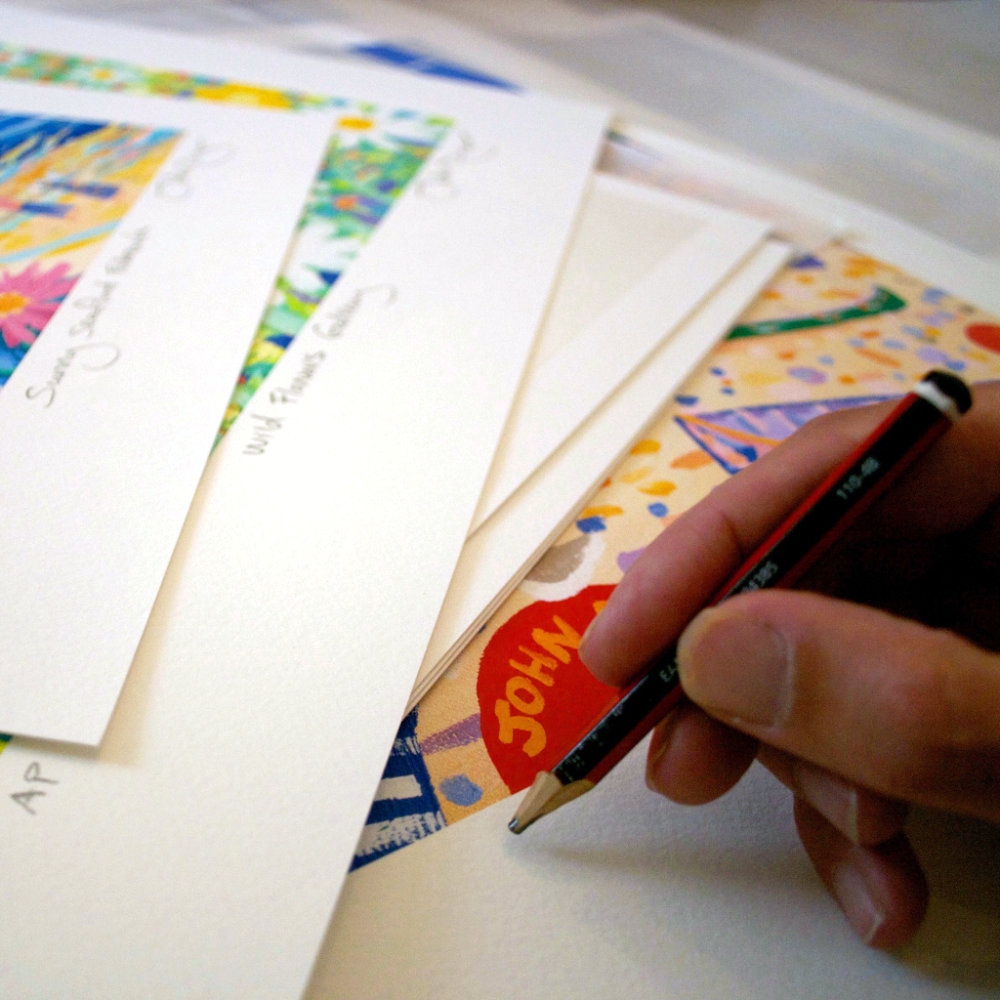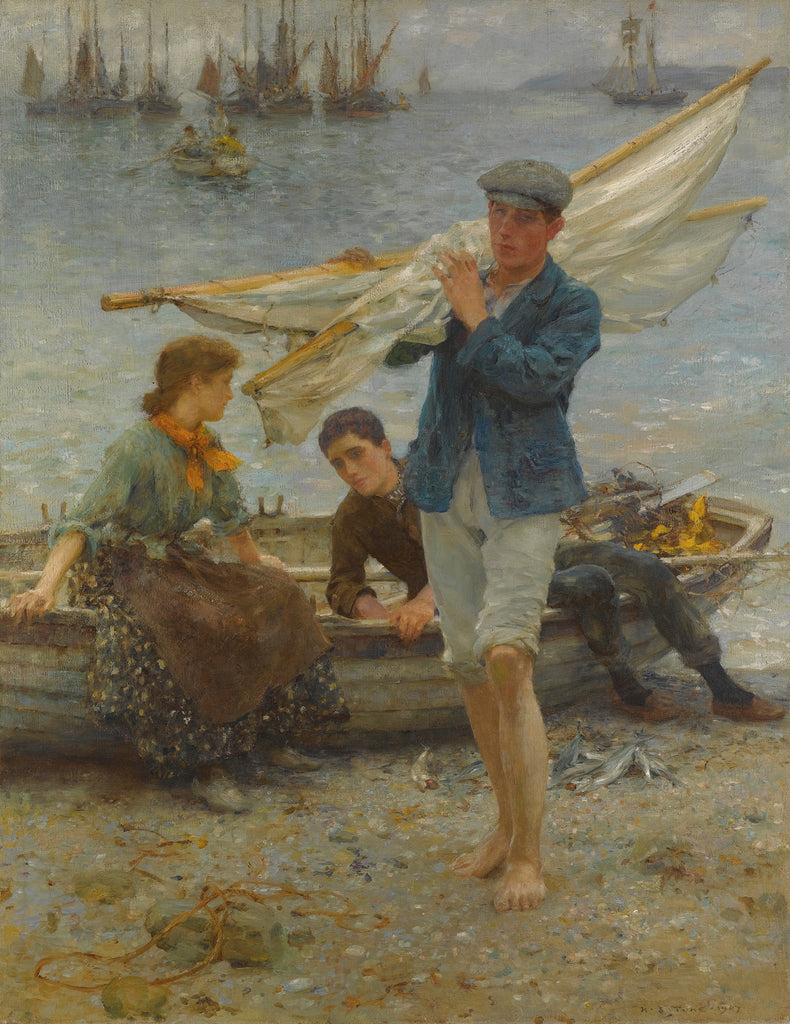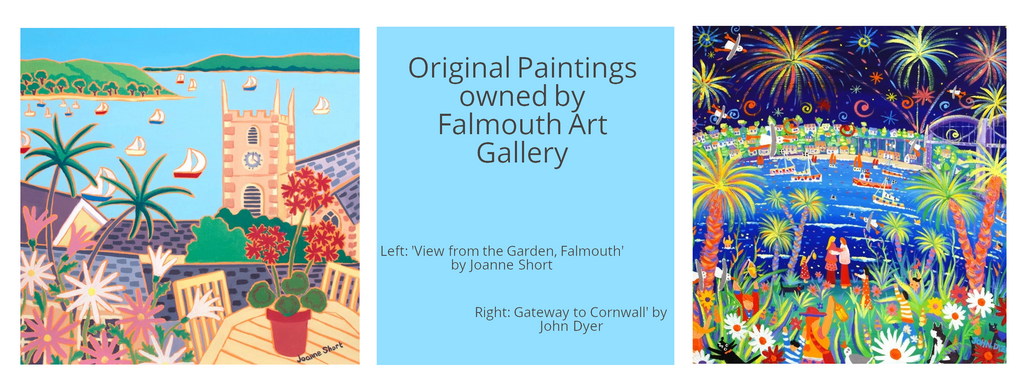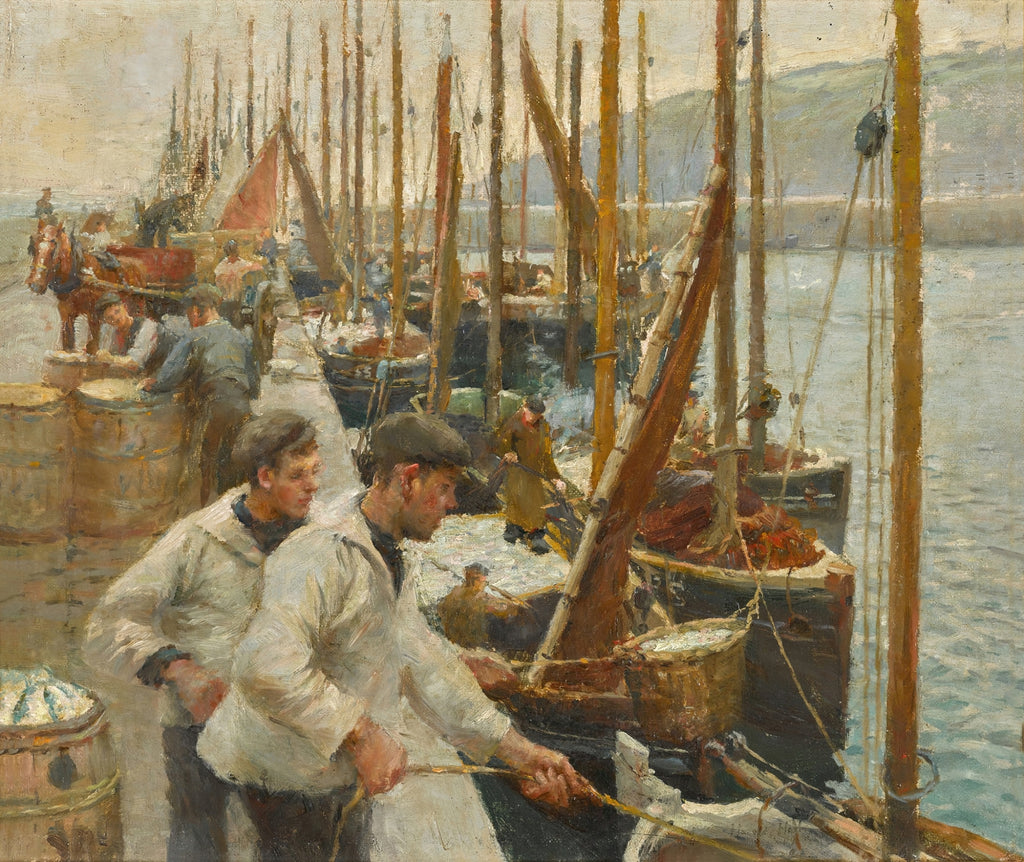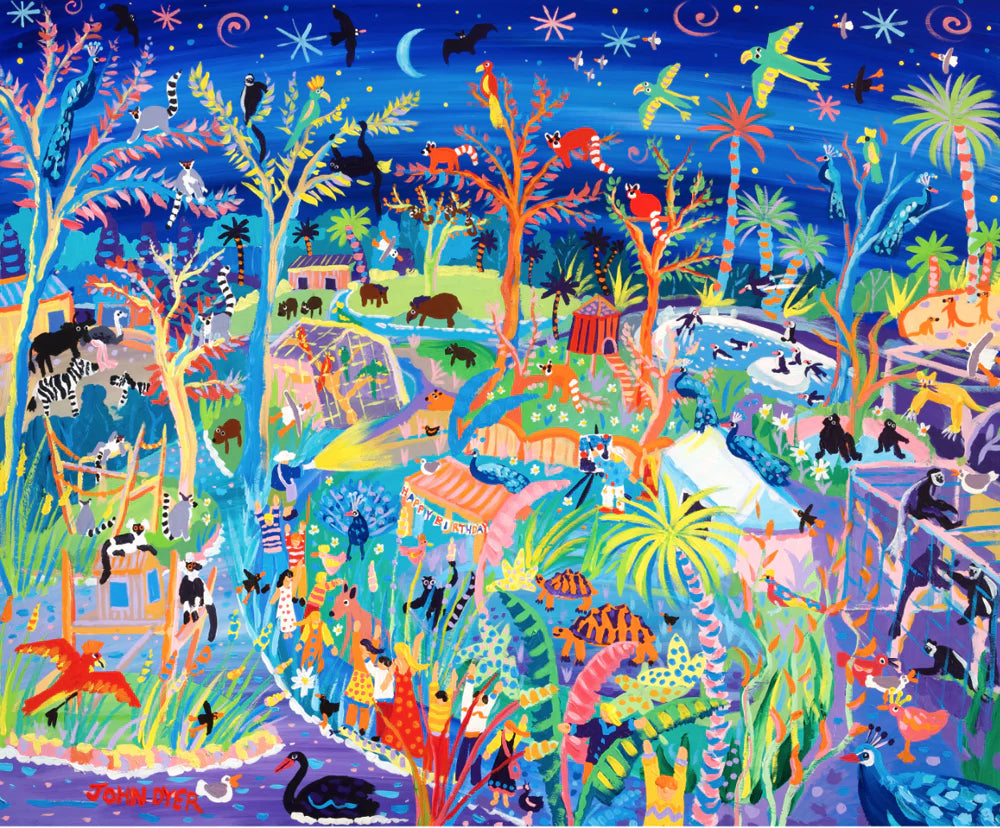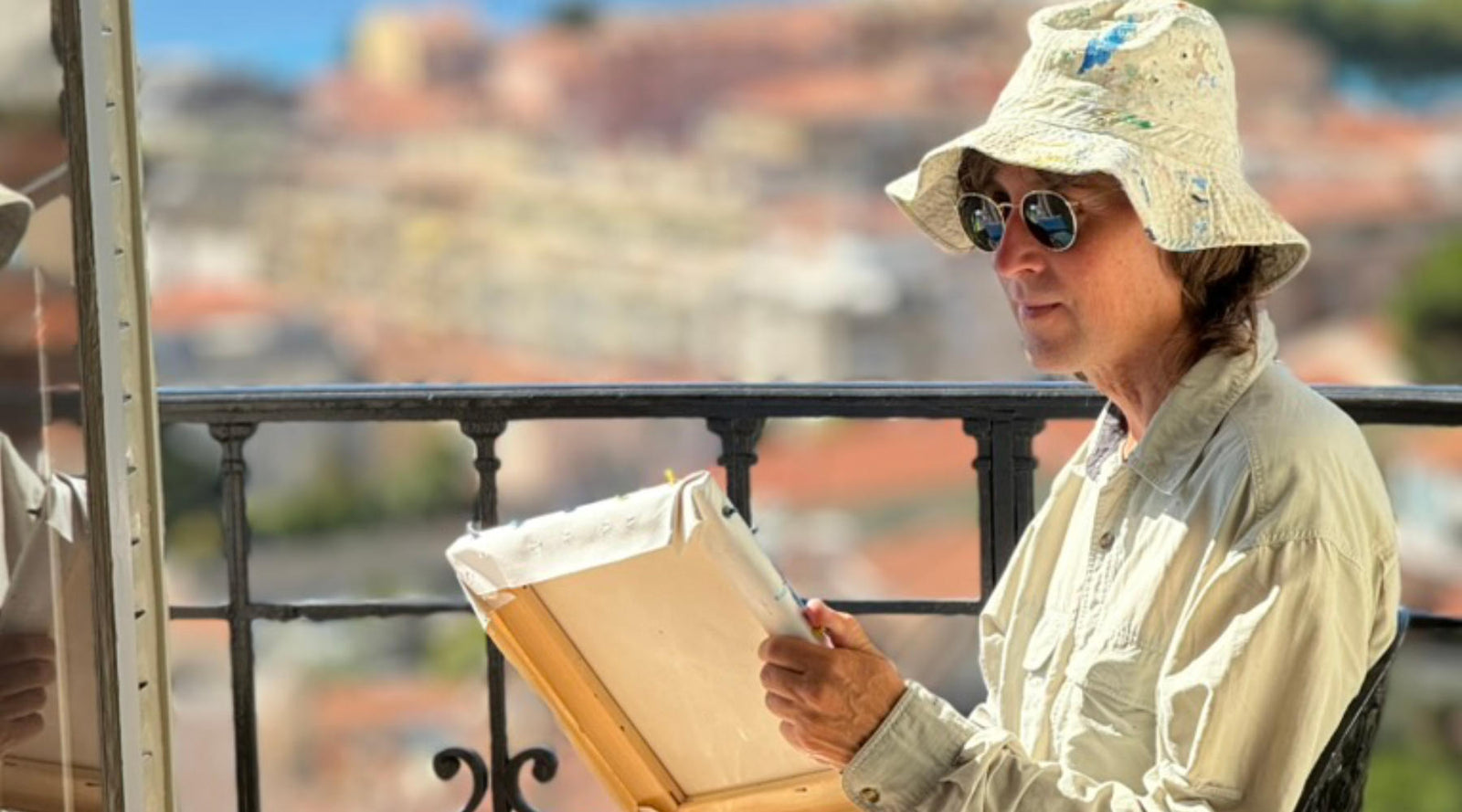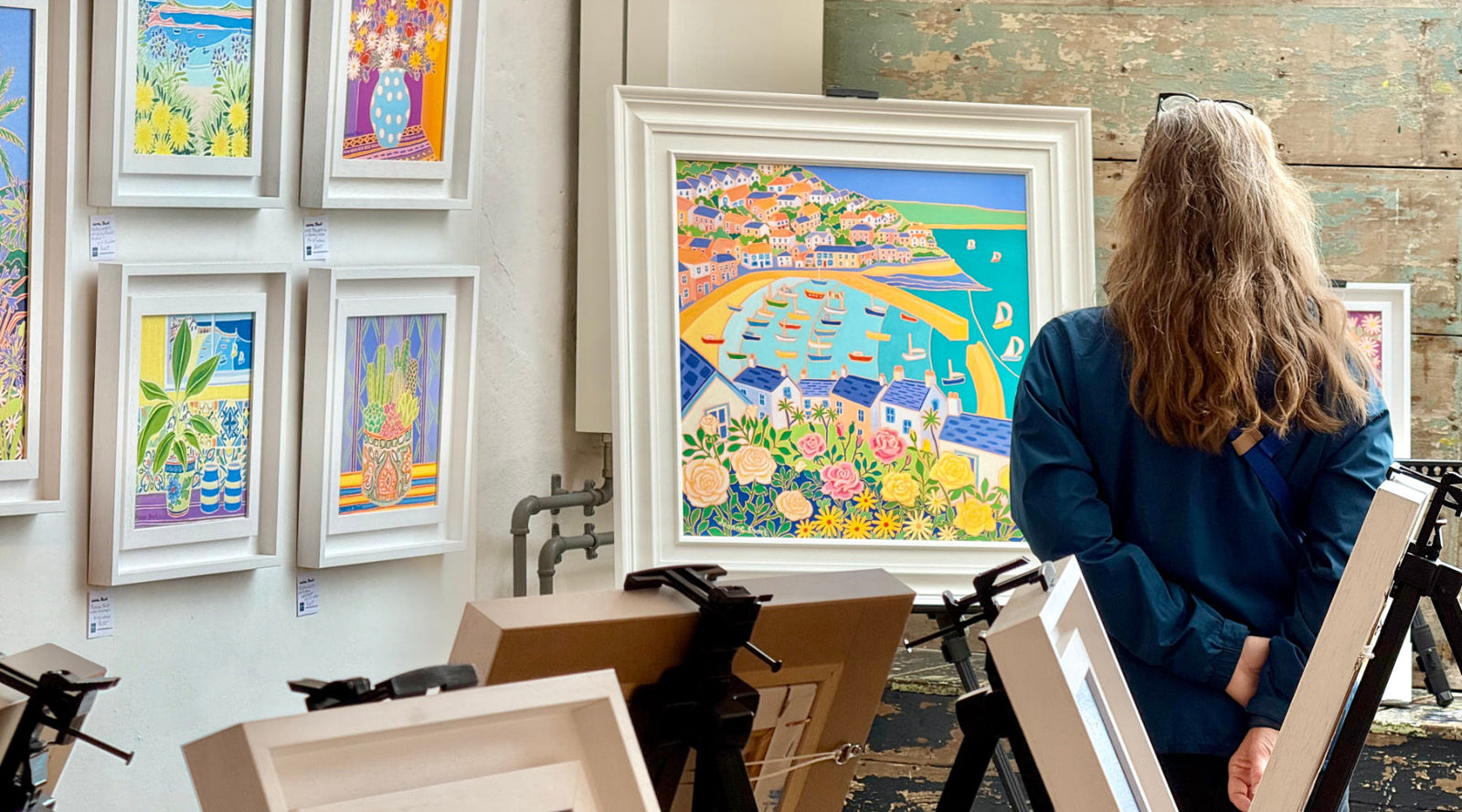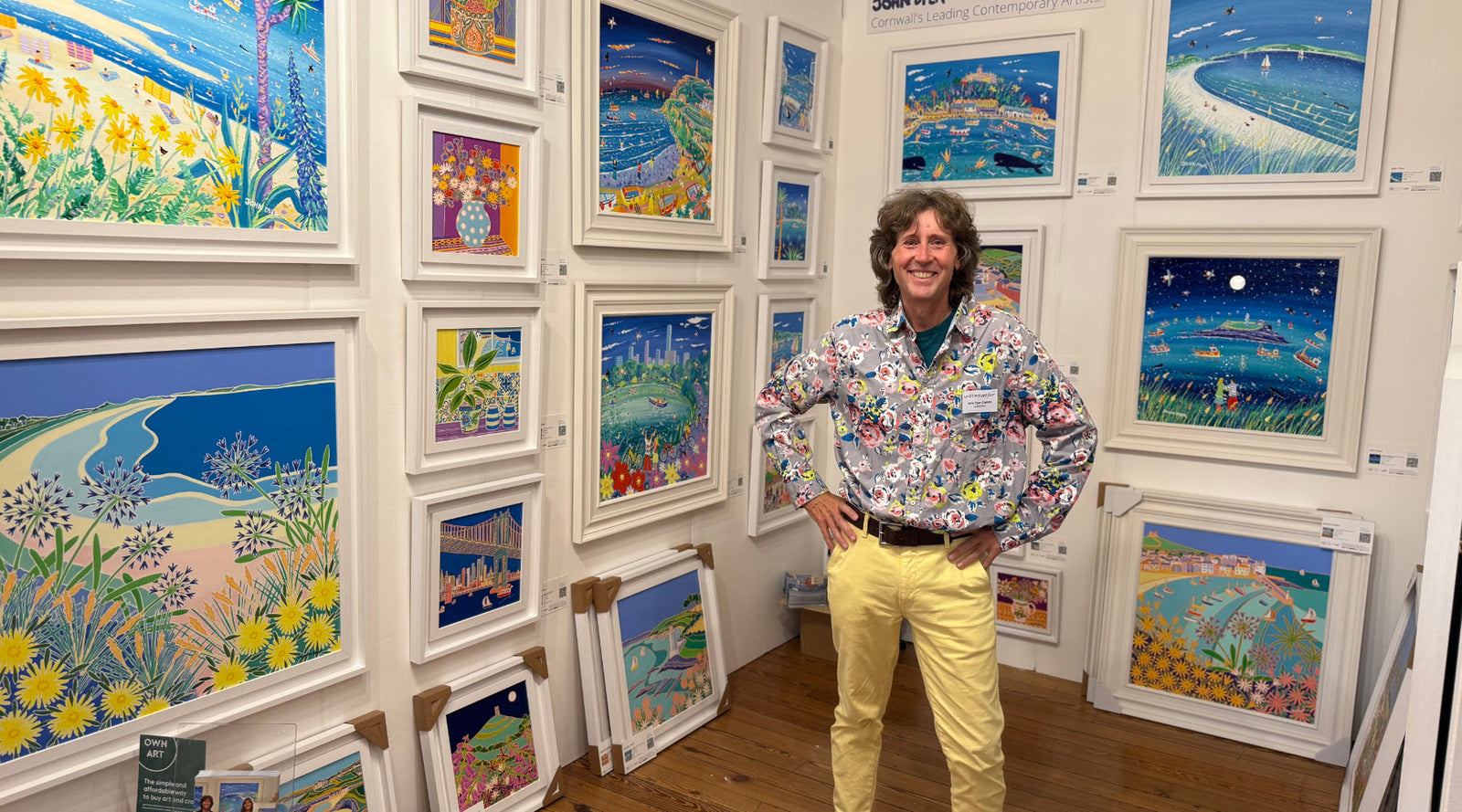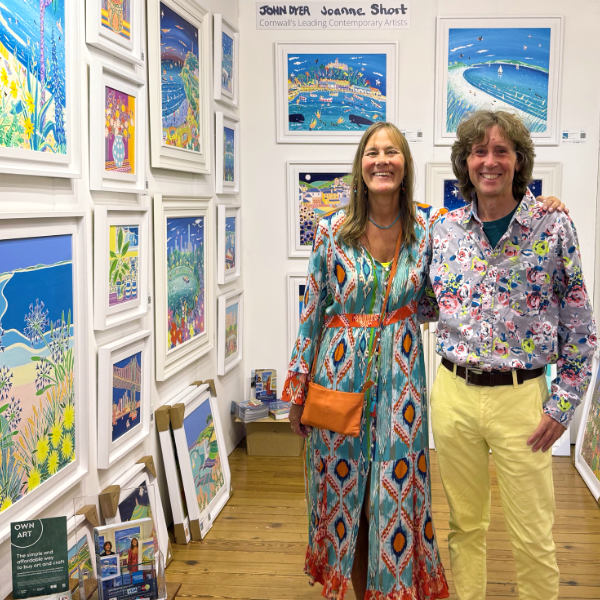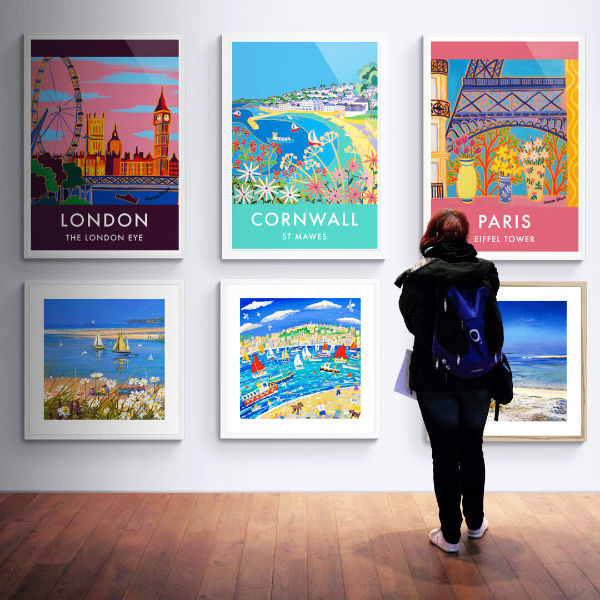
Above: British artist Henry Scott Tukev - Open Edition Art Print. 'The Bathing Cove'. Available to buy online.
Searching for iconic British artists and their groundbreaking work? This article provides a concise overview of Britain’s artistic giants and their masterpieces that have marked milestones in art history, shaping both British culture and international trends.
Key Takeaways
-
British art has evolved eclectically over centuries, without a uniform national style, showcasing the nation’s diverse heritage and reflecting pivotal historical events such as the Industrial Revolution and the Enlightenment period.
-
Iconic British artists like Turner, Gainsborough, and Hogarth have shaped the evolution of British art with their signature works and contributions, influencing global art movements and highlighting key developments in British art history.
Fascinatingly, British art has evolved without adhering to a single national style, with artists like Turner and Constable being recognized for their unique contributions rather than being part of a cohesive movement. The journey of British art spans over five centuries, reflecting the nation’s diverse heritage, democratic ideals, and historical oscillations in creativity.
Early British art history reveals intricate works such as the Lindisfarne Gospels from the Anglo-Saxon period and elaborate early medieval churches. The English Renaissance saw a flourishing of visual arts, particularly an English portrait style, during the Tudor era, although it was distinct from the Italian Renaissance in its celebration of playwrights and poets. As we move into the Elizabethan era, portraiture was characterized by a lack of spatial depth, common in continental works of the time, and the era’s grand ‘prodigy houses’ reflected the architectural ambitions of post-Reformation Britain.
The 17th-century enlightenment period influenced artists like George Stubbs, William Hogarth, and Francis Bacon, whose art portrayed scientific and industrial progress. The Romantic period introduced stellar British artists like William Blake, John Constable, and J.M.W. Turner, who redefined landscapes amidst rural and industrial change.
The Industrial Revolution dramatically transformed the British landscape, providing novel subject matter and inspiring artists to develop new styles and techniques.
The emergence of British Pop Art in the 1950s coincided with the postmodern era and resonated with global movements such as Conceptualism, Minimalism, and abstract expressionism.
Iconic British Artists and Their Signature Works

Numerous iconic English painters have left their mark on British art, significantly contributing to its evolution. Some of these artists include:
-
Anthony van Dyck, who introduced Baroque elements to British art and influenced the court of Charles I with a new sensuality and drama in painting.
-
Gainsborough, a renowned landscape painter, known for his profound contributions to the genre with his evocative landscape paintings.
-
Hogarth, a pivotal portrait painter, who created satirical modern moral tales and developed the English portrait style through his depictions of aristocrats.
These artists have made significant contributions to British art and have shaped its development over the years.
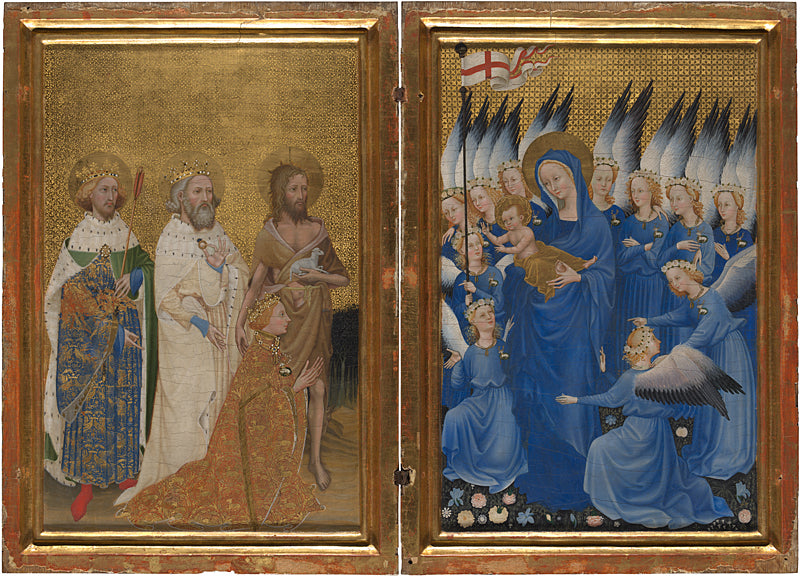
Above: The Wilton Diptych 1395-1399
The Wilton Diptych (1395-1399) represents a pivotal point in British art history, marking England’s artistic and political detachment from Europe with its distinctive style, which Constable and others built upon through their influences to revolutionize landscape painting. These artists, each unique in their style and contributions, have left an indelible mark on British art, their masterpieces showcasing the evolution of British art and its impact on global artistic movements.
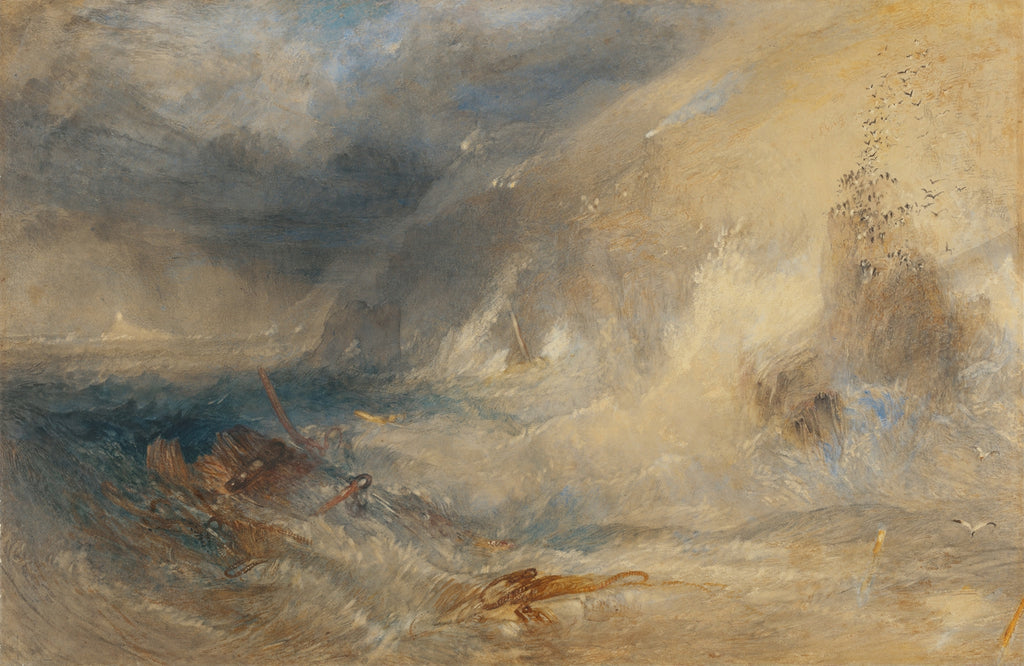
Above: Long Ship’s Lighthouse, Land’s End (about 1834–1835) by JMW Turner
J.M.W. Turner, acclaimed for his mastery of light and atmosphere, created masterpieces such as ‘Fishermen at Sea’ and ‘The Fighting Temeraire’, showcasing his innovative treatment of subjects and stylistic development. His forward-thinking vision was evident in works like ‘Rain, Steam and Speed – The Great Western Railway’ and ‘Snow Storm - Steam-Boat off a Harbour’s Mouth’, where he blended dramatic natural elements with the modern technological world.
Contemporary British Artists Shaping Today's Art Scene
Emerging talents continually redefine norms and push boundaries in the dynamic, ever-evolving contemporary British art scene. Graham Crowley, a renowned painter, for example, was celebrated for his textured style that is redefining painting in Britain, landing him an award in the 2023 John Moores Painting Prize.
Recycled cardboard artworks and life-size sculptures by mixed media artist. Josh Gluckstein, emphasizing sustainability, have propelled him to international acclaim. Work by Jadé Fadojutimi, characterized by vibrant abstracts infused with pop art and symbolism, has gained notable market value and is represented by London galleries.
These contemporary artists are not only shaping the current British art scene but are also setting the course for future artistic explorations, their vibrant and thought-provoking works pushing the boundaries of what art can be and the themes it can explore.
British Artists based in Cornwall
Above: Return From Fishing (1907), Henry Scott Tuke
Cornwall’s breathtaking landscapes and unique atmosphere have irresistibly drawn British artists. Turner himself was drawn to St Ives at a certain point. The region’s natural beauty and distinctive character have not only inspired but also shaped the works of many artists such as The Newlyn School in the 1800s with Stanhope Forbes, Walter Langley, Elizabeth Forbes (nee Armstrong), Frank Bramley, Henry Scott Tuke, to name but a few and the St Ives school including Wilhelmina Barns-Graham, Paul Feiler, Sir Terry Frost, Patrick Heron, Roger Hilton, following on from the work by Ben Nicholson, Barbara Hepwoth and Naum Gabo. All of these artists have become well know in the British art scene.
Their works are not simply representations of the Cornish landscapes; they capture and translate the essence of Cornwall, including:
-
its vibrant colours
-
its shifting moods
-
its tranquility
-
its wildness
These works, in turn, contribute to the rich tapestry of British art, adding another layer of depth and complexity to its narrative.
The influence of Cornwall on these artists and their subsequent contributions to British art underscores the symbiotic relationship between artists and their environment, the one shaping and being shaped by the other, in a continual dance of inspiration and creation.
British Art in Public Spaces
The National Galleries of England and Scotland and Tate galleries are instrumental in preserving and promoting British art. They employ conservation technicians who work diligently to maintain the condition of artworks for public exhibition, and they host educational programs to engage the public with the nation’s artistic heritage.
The Scottish National Gallery is undergoing refurbishment aimed at improving the presentation and preservation of British art, demonstrating a commitment to enhancing the cultural heritage experience. In collaboration with the Royal Academy and the Royal Society, they also promote public engagement with British art through unique access via Friends memberships, offering benefits such as unlimited free exhibition entry and exclusive previews.
Tate galleries, on the other hand, encourage accessibility and community involvement in British art by offering free admission to permanent collections and hosting family-friendly events and programs. Their Tate Exchange program exemplifies the embrace of collaborative and educational initiatives, where artists, researchers, and the public can jointly explore new ideas and perspectives on art.
Above: examples of 2 paintings by Joanne Short and John Dyer, owned by Falmouth Art Gallery, available as limited edition prints at The John Dyer Gallery
Even on a smaller scale, public galleries such as the Falmouth Art Gallery and the Penlee House Gallery and Museum in Cornwall are cherished cultural institutions that proudly house an impressive collection of original paintings by some of Cornwall's best-known artists. To commemorate the 150th anniversary of the birth of Newlyn School artist Harold Harvey (1874 – 1941), Penlee House Gallery & Museum is staging a major exhibition of his work from 1 May to 29 September 2024. An exhibition that will be well worth a visit.
Above: 'Fishing Boats, Newlyn' by Harold Harvey
Esteemed for its dedication to the region's artistic heritage, Falmouth Art Gallery features a small collection of the vibrant and colourful works of John Dyer, with paintings from his Darwin 200 and Brunel 200 residencies represented in the gallery.
Above: British art by John Dyer featuring animals at the zoo. Part of the Falmouth Art Gallery permanent collection. Available to buy as a limited edition print.
Alongside John's captivating canvases, visitors can also admire the art of Joanne Short, whose painting in the collection invites a sense of calm and contemplation in a lanscape view across the town, over the Fal River towards the Carrick Roads. Ted Dyer, another prominent figure in the Cornish art scene, contributes to the gallery's collection too with an enchanting snow scenes of Gyllyngvase beach in Falmouth.
The Intersection of British Art and Design
Collaborative partnerships between British artists, interior designers, and homeware brands have led to the infusion of art into everyday living environments. These cross-disciplinary collaborations have resulted in distinctive interior decor items that carry a strong artist’s signature, reinventing everyday objects by integrating function with high-end design and aesthetics.
Before becoming a renowned painter, Francis Bacon started his career as an interior designer, working in the modernistic style of Eileen Gray. This early career phase, guided by the painter Roy de Maistre, significantly influenced his later work, showcasing the profound impact of design on his artistic development.
Above: a selection of mugs with work by John Dyer
These artist-designer partnerships have not only enhanced the individuality of British interiors but have also strengthened the role of art in everyday life, making it a more accessible and integral element of home design. The intersection of British art and design, therefore, is not simply about creating beautiful objects; it’s about infusing art into our daily lives, making it a part of our living environment.
Summary
From its early development to its current evolution, British art has proven to be a diverse and dynamic field, reflecting the nation’s history, societal changes, and the unique contributions of its artists. From iconic figures like Turner and Constable to contemporary artists like Jadé Fadojutimi and Richard Ayodeji Ikhide, British art continues to evolve and inspire. Whether it’s in public spaces like the National Galleries of Scotland and Tate galleries, the vibrant art scene in Cornwall, or the intersection of art and design, British art continues to enrich our lives, challenging our perceptions and inviting us to see the world from new perspectives.
Buy original British Art Online
Frequently Asked Questions
Who are the English naive artists?
English naive artists are individuals who work in a simplistic style. Famous English and British naive artists include LS Lowry, Fred Yates, John Dyer, Alfred Wallis, Joan Gillchrest and Bryan Pearce.
Who is a very famous artist?
Leonardo da Vinci is a very famous artist, widely recognized as one of the most influential artists of all time. His masterpiece, the Mona Lisa, is permanently displayed in the Louvre Museum in France.
Who is the most famous British artist?
The most famous British artist is Joseph Mallord William Turner, known for his impressive landscape and marine paintings. He is widely regarded as one of the greatest painters in British art history. Sir Joshua Reynolds, another pivotal figure in British art, became the first president of the Royal Academy of Arts, where he significantly contributed to the British art scene with his innovative speeches and leadership.
How has British art evolved over the centuries?
British art has evolved over centuries, reflecting the nation's diverse heritage, democratic ideals, and historical oscillations in creativity. Its journey spans from the intricate works of the Anglo-Saxon period to the flourishing of visual arts during the English Renaissance, the influence of the Industrial Revolution, and the emergence of Pop Art in the 1950s.
Who are some iconic British artists and what are their significant works?
Some iconic British artists with significant works are Gainsborough, Hogarth, and J.M.W. Turner. Turner is known for his masterpieces such as 'Fishermen at Sea' and 'The Fighting Temeraire'.
